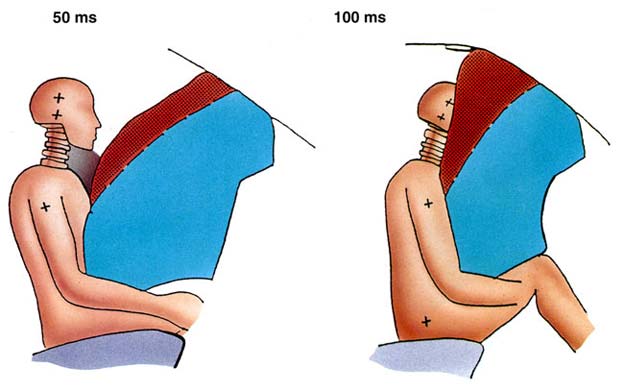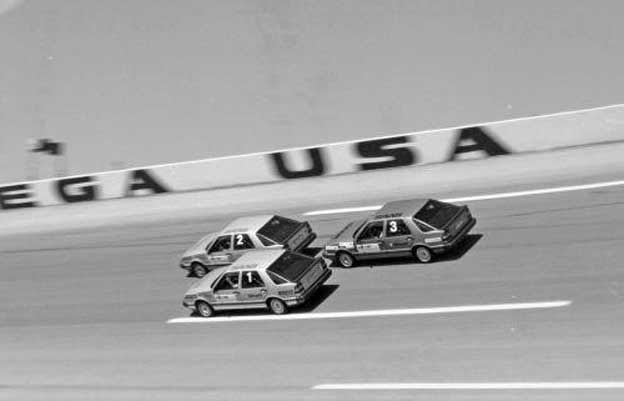When it comes to automotive safety, Saab has long been synonymous with robust engineering that protects its occupants under the most demanding conditions. A recent unbelted frontal crash test conducted by MGA Research on the 2003-2012 Saab 9-3 Sedan/SportCombi has demonstrated, once again, Saab’s excellence in passive safety design. Unlike standard tests that assume passengers are belted, this unusual evaluation pushes the boundaries, simulating a worst-case scenario—a full-overlap frontal crash at 40 km/h (25 mph) with unbelted occupants.
We’ll dissect the test, dive into its remarkable results, and explain why Saab’s focus on safety goes beyond conventional seatbelt dependency, cementing its place as a leader in passive safety even though the brand hasn’t produced vehicles since 2012.
Table of Contents
- 1 The Unconventional Test: Saab’s Safety Beyond Seatbelts
- 2 Airbags: Saab’s Life-Saving Standard
- 3 Impressive Safety Metrics: A Close Look at the Data
- 4 Saab’s Passive Safety Engineering: A Legacy of Innovation
- 5 Airbags Alone Aren’t Enough: The Role of Structural Integrity
- 6 The Unmatched Safety Legacy of Saab
- 7 Why Saab 9-3 Stands the Test of Time
The Unconventional Test: Saab’s Safety Beyond Seatbelts
Most safety tests conducted by organizations like the National Highway Traffic Safety Administration (NHTSA) or Euro NCAP assume that occupants are buckled in. This makes sense, as seatbelts are the first line of defense in an accident. However, what happens when the passengers aren’t wearing their seatbelts? This test conducted by MGA Research, a company specializing in automotive safety testing since 1977, sought to answer that very question.
In a full-overlap frontal crash at 40 km/h, both driver and passenger dummies—5th percentile females—were left unbelted. This is a significant departure from traditional crash tests, and it provides insights into how the vehicle’s structure and safety systems respond when seatbelts, the most basic safety feature, are not used. The results?
Quite surprising.
Airbags: Saab’s Life-Saving Standard
In the unbelted test, the Saab 9-3’s standard airbags played a crucial role in protecting the occupants. Without the restraint of a seatbelt, an occupant’s body is propelled forward during impact, making airbags even more essential. Saab engineers have meticulously designed their airbag deployment system to provide maximum protection in these extreme situations.

The test results showed that the airbags effectively cushioned both the driver and passenger, preventing life-threatening injuries despite the lack of seatbelt use. While no one should ever drive or ride without wearing a seatbelt, Saab’s airbag system ensured that the unbelted dummies sustained minimal injuries, even under harsh crash conditions.
Impressive Safety Metrics: A Close Look at the Data
Let’s break down the data, which shows just how well the Saab 9-3 performed:
- Head Injury Criteria (HIC): The driver registered an HIC of 39, while the passenger recorded 96—both comfortably within the FMVSS 208 compliance limit of 700.
- Neck Tension: The driver’s neck tension was measured at 804 N, while the passenger’s was higher at 1220 N, but both well below the maximum allowable limit of 2620 N.
- Neck Compression: The driver’s neck compression registered 257 N, while the passenger’s was 1638 N, both well under the 2520 N limit.
- Chest G’s: Both the driver and passenger experienced chest acceleration levels below 40 G’s, significantly under the maximum of 60 G’s.
- Femur Loads: Perhaps the most telling statistic, femur loads (measured in Newtons) were far below the 6805 N threshold, with the highest reading coming in at 3694 N.
These metrics clearly show that Saab’s engineers have gone above and beyond to design a vehicle that offers exceptional protection even in the absence of seatbelts. Few manufacturers would perform as admirably in this extreme scenario, proving that Saab’s legacy as a safety pioneer is well-earned.
Saab’s Passive Safety Engineering: A Legacy of Innovation
One of Saab’s defining characteristics has always been its relentless focus on passive safety systems—those that work automatically to protect the vehicle’s occupants, whether they are belted or not. In the 9-3, these systems include airbags, crumple zones, and reinforced cabins, all of which are designed to absorb and dissipate crash forces away from the passenger compartment.

Saab’s engineers didn’t just meet the Federal Motor Vehicle Safety Standards (FMVSS) 208 compliance—they exceeded it by building a car that performs under extreme conditions. This crash test demonstrates how well the 2003-2012 Saab 9-3 performs, even when unbelted, making it a standout example of passive safety technology.
Airbags Alone Aren’t Enough: The Role of Structural Integrity
While airbags are a key component of the 9-3’s safety, they aren’t the only heroes in this story. The car’s structural integrity also played a major role in protecting the occupants. The Saab 9-3 features a reinforced steel frame and carefully designed crumple zones that absorb the energy from the impact, preventing the cabin from collapsing and significantly reducing the risk of injury to the passengers.

During the MGA test, the crumple zones performed exactly as intended, absorbing much of the crash energy before it could reach the cabin. Combined with the airbag system, this structural integrity ensured that both driver and passenger remained well protected, even in the absence of seatbelts.
The Unmatched Safety Legacy of Saab
Even though Saab stopped producing vehicles in 2012, its reputation for building some of the safest cars on the road remains. The 9-3’s performance in this unbelted crash test serves as a reminder of just how advanced Saab’s safety engineering was—and still is. Few cars from that era, or even today, could offer the same level of protection in such an extreme scenario.
The results of this test speak volumes about Saab’s commitment to safety. While every driver and passenger should always wear their seatbelts, it’s reassuring to know that in a worst-case scenario, a Saab 9-3 will still offer significant protection.
Why Saab 9-3 Stands the Test of Time
This unbelted crash test is more than just a demonstration of the Saab 9-3’s resilience—it’s a testament to the brand’s unwavering commitment to safety. The 2003-2012 Saab 9-3 continues to be a beacon of passive safety innovation, showcasing that even without seatbelt use, its occupants are safeguarded by some of the most advanced safety systems in automotive history.
For Saab enthusiasts and safety-conscious drivers alike, this test reinforces why Saab’s legacy remains strong. While the cars may no longer be in production, the 9-3’s performance in extreme crash tests ensures that it will remain a benchmark for passive safety for years to come.












I have had a collision In a Saab9-3 estate, my seatbelt was not working, as I got in the car to drive home I put the seatbelt on, but the belt did not tension against me, it was all loose, I was in collision with another vehicle on my journey home, the airbags certainly worked as I was knocked out and woke to find the Fire Brigade cutting the airbags out of the way. They seemed to delight in cutting the roof of the car to get me out as the ambulance people wanted to put me on a spinal board which I ended up strapped to. My main injury was a broken arm which was caused by something in the door (not sure what as the door and pillar were cut off too)I have a titanium plate in my arm now. I seriously doubt I would not of survived if it was not for that Saab 9-3.
Thank you for the shared experience, and here we see that in practice Saab cars prove to be very successful in protecting passengers in dangerous situations.